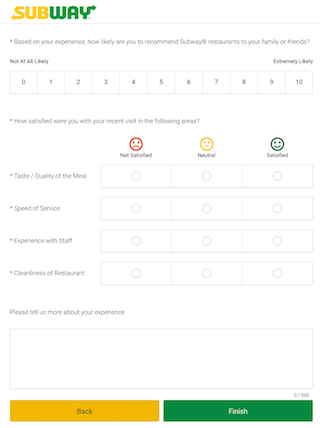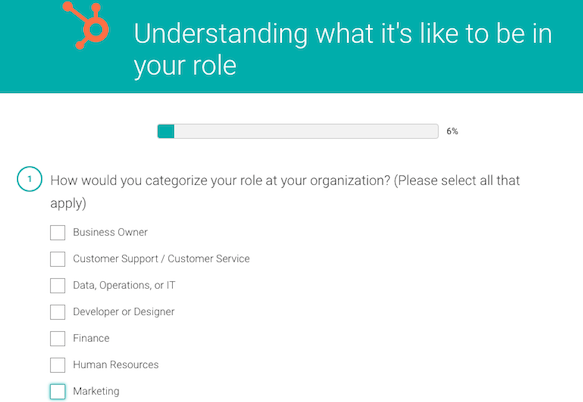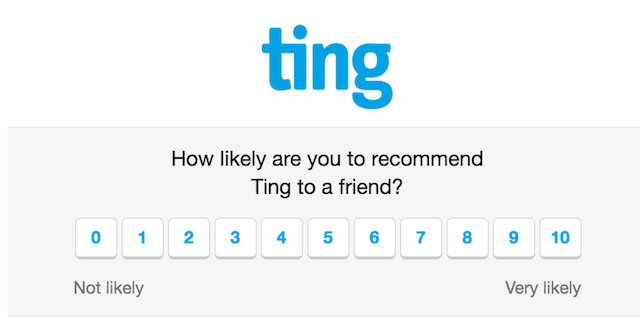Is your customer service top-notch? Are your product features the best in the business? You need to ask the right customer feedback questions to find out. Asking the right way and keeping a strategy in mind will help you get the most out of your customer feedback questions.
Use this list of 75 customer feedback questions to address every part of your business, from customer service to market research. Customize these questions to suit your business and collect them in a survey, email, contest, question card, or plain old conversation to get answers. We’ve updated this list of feedback questions and examples in 2023 to give you everything you need to know about collecting exceptional customer feedback in your customer surveys, as well as how to get responses and how to use it.
Index: Customer Feedback Questions and Strategies
Jump to the information you need.
- The 10 Most Important Customer Feedback Questions
- Customer Feedback Questions
- To Improve Customer Service
- To Solve Problems
- To Showcase Your Strengths
- To Improve Your Product or Service
- To Understand Your Customer’s Needs
- To Understand Your Customers
- To Improve Your Marketing Messages
- To Learn About Competitors
- To Improve Your Website
- To Test a Product, Service or Strategy
- To Understand the Purchasing Experience
- To Assess Employees or Training Strategies
- To Gather Quantifiable Data
- To Improve NPS Scores®
- To Follow Up
- To Assess Performance Improvements
- Customer Feedback Responses
- How to Get Customer Feedback
- Best Practices for Collecting Customer Feedback
- Ways to Use Customer Feedback
The 10 Most Important Customer Feedback Questions
If you’re strapped for time, these are the top 10 most important customer feedback questions to include in a survey. These questions will give you essential information about the most impactful parts of your business.
1. How did you hear about us?
2. Were your expectations met, unmet, or exceeded?
3. Did our employees or customer service staff help you? How?
4. What, if any, products, services, or features are we missing?
5. What did you enjoy most about your experience?
6. How would you describe your experience in our store / on our website?
7. On a scale of zero (unlikely) to ten (very likely), how likely would you be to recommend us to friends or family?
8. From one (unhappy) to ten (very happy), how would you rate your overall satisfaction with us?
9. On a scale of one (not easy) to ten (very easy), how easy was your checkout experience?
10. What would you change about your experience?
These are the ten more important customer feedback questions because they address every aspect of the buyer’s experience. This way, you can get an overview of how your customers are finding your business, and what their experience is like once they arrive. You can also see where you can improve, what your strengths are. You’ll also get information about several important elements, such as your checkout experience, staff, store ambiance or website usability. Finally, you’ll gather important quantifiable data like your NPS (question 7), CSAT (question 8), and CES (question 9). To get more detailed information about any area of your business, keep reading.
Featured Resource: 5 Survey Templates + Customer Feedback Strategy Guide
Download the Customer Feedback Strategy Toolkit
Try These 75 Customer Feedback Questions to Improve Your Business
To Improve Customer Service
Customer service can make or break your business. The right customer feedback questions can help you improve customer service and make a stellar customer experience.
1. Were you greeted in a friendly manner?
2. Did our staff answer your questions?
3. Did you find our staff helpful and courteous?
4. Were you served promptly?
5. How can we make your experience even better?
To Solve Problems
Sometimes a customer leaves because they’re just looking for something different. Sometimes they get frustrated or treated badly. The right customer feedback questions will help you know the difference.
6. Is our product/service no longer useful to you?
7. Did the price of our product/service cause you to leave?
8. Have you decided to test out a competitor?
9. What would you like to see changed?
10. What would you say about your experience?
Featured Resource: 5 Survey Templates + Customer Feedback Strategy Guide
Download the Customer Feedback Strategy Toolkit
To Showcase Your Strengths
It’s essential to ask the right customer feedback questions to happy customers. This is a chance to show what you’re doing that’s amazing. Use these questions to guide a review or a testimonial video.
11. How has our product/service made an impact on you/your business/your lifestyle?
12. What is your favorite thing about our product/service?
13. What would you tell your friends or colleagues about us?
14. Has any part of our business exceeded your expectations?
15. How would you rate your experience? (out of 5 or 10)
To Improve Your Product or Service
Continuous improvement makes good businesses into great ones. Even if customers love your product or service, you should always know what you could do better (before your competitors do it first!).
16. Which features do you love?
17. Which features aren’t useful to you?
18. Which features do you wish we had?
19. What would you change about our product/service?
20. Are our products/services priced appropriately?
To Understand Your Customers’ Needs
Your customers come to you because they need something, and you provide it. To continue providing it, make sure you know if their needs change.
21. What challenge or problem does our business solve for you?
22. How do you measure these challenges? (expenses, revenue, time, leads, clicks, etc.)
23. How long did you use our product or service before seeing results?
24. What prompted you to find a solution?
25. How could we make this solution more effective for you?
Featured Resource: 5 Survey Templates + Customer Feedback Strategy Guide
Download the Customer Feedback Strategy Toolkit
To Understand Your Customers
When it comes to advertising and marketing, you have to know who your customers are, what they pay attention to, and what they respond to. When you know this, you can deliver relevant messages they’ll actually like.
26. What is your name/age/gender/job title?
27. Do you read paper books, magazines and newspapers, or read online?
28. Which do you use more; tv, smartphone, or laptop?
29. Which do you prefer; quick and convenient or detailed and customized?
30. Do you use free trials/coupons/offers?
To Improve Marketing Message
Once you know your customers, you need to know what to say to them. Customer feedback questions about how your customers utilize your business will help you focus on your biggest selling points.
31. How did you find us?
32. How long have you been a customer?
33. What made you want to try us?
34. Did you use a competitor before us?
35. How often do you use our product/service?
To Learn About Competitors
Most of us don’t find the right solution the first time. That means your customers probably have some experience with your competitors, and they can give you information you won’t find elsewhere.
36. What were you using before you found us?
37. What did you like about the previous product/service(s)?
38. What caused you to leave?
39. What does our business do better?
40. Is there anything you miss about the previous product/service(s)?
To Improve Your Website
If your business doesn’t have a working website, you’re missing millions of customers searching for you online every day. If you have a website, but you’re not sure why it’s not working, customer feedback questions can help you find out.
41. Have you used or visited our website?
42. Was it easy to find?
43. What were you looking for on the website? Did you find it?
44. Was the website easy to use?
45. What would you change about it?
Featured Resource: 5 Survey Templates + Customer Feedback Strategy Guide
Download the Customer Feedback Strategy Toolkit
To Test a Product, Service or Strategy
Adding a new product or service to your business can be risky, but the right customer feedback can help you make informed decisions. Ask your customers what they think about the new expansion you’re planning. By revealing this information to your loyal customers, you can also create some excitement and recruit first adopters.
46. Would you find [new feature] useful?
47. Would you buy [new product] if we had it?
48. If we introduced [new feature/product] would you be willing to test it?
49. If we provided [rewards program/discounts/another special] would you use it?
50. How much would you pay for [new feature/product]?
To Understand the Purchasing Experience
If someone has already decided to buy, making this as easy as possible is the best way to complete the sale. Flaws in this process can turn customers away, ruining all of your efforts to gain their interest in the first place. Customer feedback questions that illuminate problems at this stage are extremely helpful.
51. How easy or difficult was it to complete your purchase?
52. Were you able to check out in a timely manner?
53. What would you improve about the check-out process?
54. Did you have to wait in line?
55. Were you able to find what you were looking for?
To Assess Employees or Training Strategies
If your business is very focused on one-on-one sales and service, asking about a specific employee can make a big difference. If you use this to assess employees’ performance, use it as a tool to reward high performance, not punish low performance. Using customer feedback to punish employees can create contention between the employees, and emphasizes adequate performance instead of encouraging outstanding performance. You might also use this as a way to assess training strategies or new policies.
56. Did an employee help you today? Who were they?
57. How would you rate your experience with this person?
58. Were they able to answer your questions or concerns?
59. Would you like to work with this person again?
60. Overall, did this person do an outstanding job?
To Gather Quantifiable Data
Several types of customer feedback responses are shown to correlate with other important business metrics, like customer loyalty, the chance of a repeat purchase, or lifetime customer value. Business analysts have developed these questions specifically to acquire measurable data about customer sentiment. These metrics include the Net Promoter Score℠ (NPS), Customer Satisfaction Score (CSAT), and Customer Effort Score (CES). Here are some customer feedback questions you might ask to gather this data.
61. How likely would you be to recommend this business to a friend? (Net Promoter Score)
62. How would you rate your overall satisfaction with our business? (Customer Satisfaction Score)
63. How would you rate your overall satisfaction with [specific product or service]? (Customer Satisfaction Score)
64. To what extent would you agree with the following: Completing my order was easy? (Customer Effort Score)
65. How easy or difficult was it for your question or problem to be resolved? (Customer Effort Score)
Featured Resource: 5 Survey Templates + Customer Feedback Strategy Guide
Download the Customer Feedback Strategy Toolkit
To Improve NPS Scores
NPS data and other quantifiable metrics are important for assessing your overall performance year-to-year, but you also have to be prepared to act upon this information. Follow up your NPS, CSAT or CES survey with these questions to pinpoint where your improvement efforts are best spent.
66. How could we make the check-out process faster or easier for you?
67. What could we change to make our product/service more user-friendly?
68. Is there anything you were expecting that you didn’t get?
69. What feature could we add that you would really enjoy?
70. How could we make it easier to resolve your questions or concerns?







